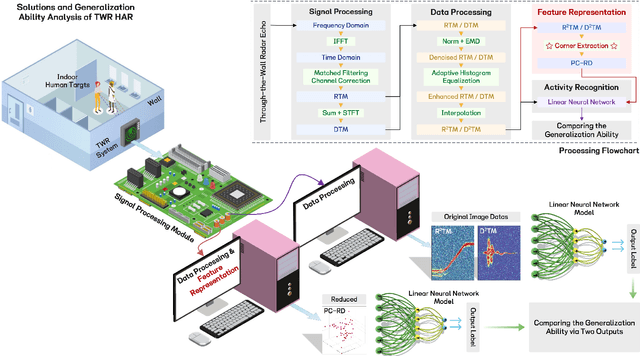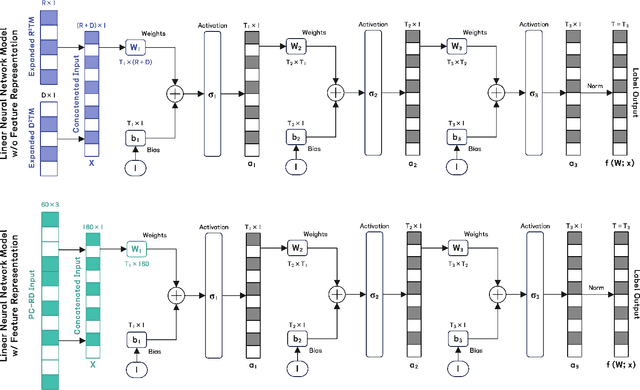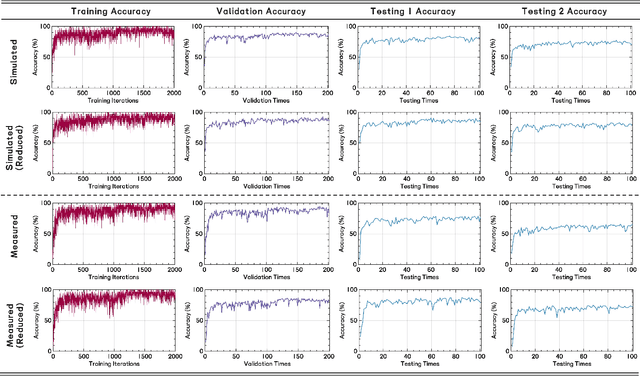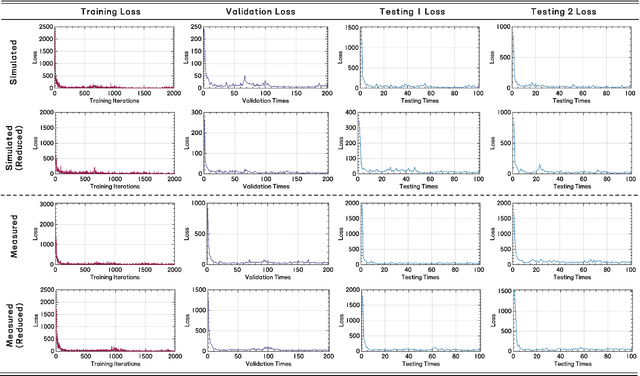Generalization Ability Analysis of Through-the-Wall Radar Human Activity Recognition
Paper and Code
Oct 10, 2024



Through-the-Wall radar (TWR) human activity recognition (HAR) is a technology that uses low-frequency ultra-wideband (UWB) signal to detect and analyze indoor human motion. However, the high dependence of existing end-to-end recognition models on the distribution of TWR training data makes it difficult to achieve good generalization across different indoor testers. In this regard, the generalization ability of TWR HAR is analyzed in this paper. In detail, an end-to-end linear neural network method for TWR HAR and its generalization error bound are first discussed. Second, a micro-Doppler corner representation method and the change of the generalization error before and after dimension reduction are presented. The appropriateness of the theoretical generalization errors is proved through numerical simulations and experiments. The results demonstrate that feature dimension reduction is effective in allowing recognition models to generalize across different indoor testers.
 Add to Chrome
Add to Chrome Add to Firefox
Add to Firefox Add to Edge
Add to Edge